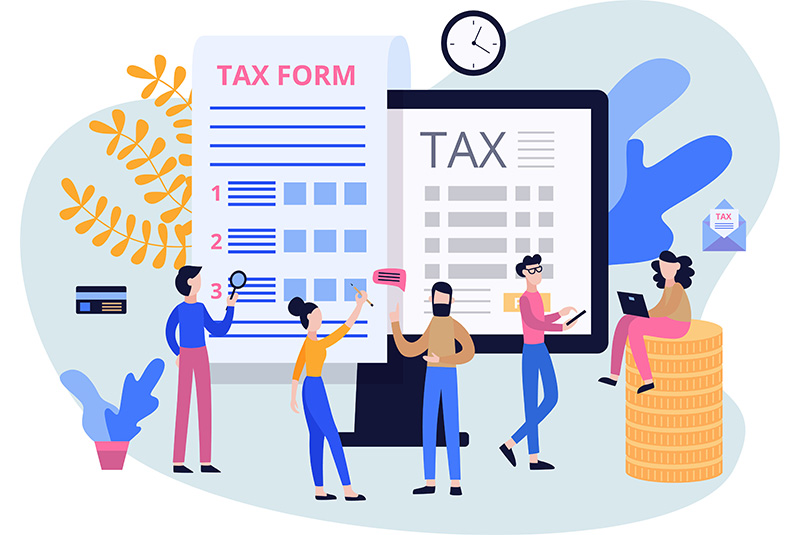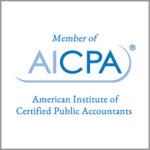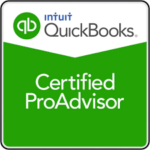Thomson Reuters/PCC and John Baer, CPA —
To Our Clients and Friends:
2020 has been quite a challenge, to say the least. The COVID-19 crisis brought massive unemployment, business closures, and an enormous amount of uncertainty. All of this has made 2020 seem like the year that never ends. In fact, I’m sure some of us can’t wait for it to be over. As we approach the end of the year, it’s time to discuss steps that can be taken to help reduce your 2020 tax bill.
The past 12 months have seen several major tax law changes. In response to the COVID-19 emergency, the Coronavirus Aid, Relief, and Economic Security (CARES) Act was signed into law in March. In addition, the Taxpayer Certainty and Disaster Tax Relief Act (Disaster Act) and the Setting Every Community Up for Retirement Enhancement (SECURE) Act were passed in December 2019. The Disaster Act extended many beneficial provisions that had expired or were set to expire. Barring additional extenders, many of these will expire again at the end of the year. The SECURE Act, on the other hand, made significant changes to the retirement rules. We’ll highlight planning techniques stemming from these recent bills, as well as other year-end tax planning ideas.
Let’s not forget that there is an election in November. While we don’t anticipate significant tax law changes if President Trump is re-elected, a victory by Joe Biden would almost certainly lead to tax reform (with potentially higher tax rates). It’s also possible that we’ll see additional COVID-19 legislation. As always, we’re paying close attention to the ever-changing tax environment to discover year-end tax planning opportunities.
Year-end Tax Planning Moves for Individuals
Here are some strategies that may lower your individual income tax bill for 2020.
Take Advantage of Generous Standard Deduction Allowances. For 2020, the standard deduction amounts are $12,400 for singles and those who use married filing separate status, $24,800 for married joint filing couples, and $18,650 for heads of household. If your total annual itemizable deductions for 2020 will be close to your standard deduction amount, consider making additional expenditures before year-end to exceed your standard deduction. That will lower this year’s tax bill. Next year, you can claim the standard deduction, which will be increased a bit to account for inflation.
Cancellation of Debt (COD) Relief Individuals can exclude up to $2 million ($1 million if not married filing jointly) of COD income from qualified principal residence indebtedness that is cancelled in 2020 because of their financial condition or decline in value of the residence. Debt cancelled after 12/31/20 still qualifies, but only if discharged pursuant to a written binding agreement entered into prior to 1/1/21.
Traditional IRA Contributions for All. The SECURE Act removed the age restriction on making traditional IRA contributions. Individuals over the age of 70½ who are still working in 2020 are no longer prohibited from contributing to a traditional IRA. However, if you’re over age 70½ and considering making a charitable donation directly from your IRA (known as a Qualified Charitable Distribution or QCD) in the future, making a deductible IRA contribution will affect your ability to exclude future QCDs from your income.
Carefully Manage Investment Gains and Losses in Taxable Accounts. If you hold investments in taxable brokerage firm accounts, consider the tax advantage of selling appreciated securities that have been held for over 12 months. The maximum federal income tax rate on long-term capital gains recognized in 2020 is only 15% for most folks, although it can reach a maximum of 20% at higher income levels. The 3.8% Net Investment Income Tax (NIIT) also can apply at higher income levels.
Take Advantage of 0% Tax Rate on Investment Income. For 2020, singles can take advantage of the 0% income tax rate on long-term capital gains and qualified dividends from securities held in taxable brokerage firm accounts if their taxable income is $40 ,000 or less. For heads of household and joint filers, that limit is increased to $53,600 and $80,000, respectively. While your income may be too high to benefit from the 0% rate, you may have children, grandchildren, or other loved ones who will be in the 0% bracket. If so, consider giving them appreciated stock or mutual fund shares that they can sell and pay 0% tax on the resulting long-term gains. However, if securities are given to someone who is under age 24, the Kiddie Tax rules could potentially cause some of the resulting capital gains and dividends to be taxed at the higher rates that apply to the individual’s parent.
Convert Traditional IRAs into Roth Accounts. This may be the perfect time to make that Roth conversion you’ve been thinking about. The current tax rates are still relatively low compared to a couple of years ago, and while they are scheduled to remain that way until 2026, depending on the results of the November election, they could increase much sooner. Also, your income may be lower in 2020 due to the financial fallout of COVID-19. On the bright side, that means you ‘re likely in a lower tax bracket than you normally find yourself. Since the CARES Act suspended Required Minimum Distributions (RMDs) for 2020, if you already budgeted to pay tax on your RMD, rolling that distribution to a Roth IRA could be a perfect move. No RMD for 2020 also means that 100% of the distribution can be classified as a rollover.
Consider Intrafamily Loans. Interest rates are at a historic low and continue to decrease. This scenario creates an attractive opportunity for those interested in assisting family members financially and transferring assets in a tax-efficient manner. Intrafamily loans, along with proper gift tax planning, may be a smart move.
Year-end Tax Planning Moves for Small Businesses
If you own a business, consider the following year-end tax strategies to minimize your tax bill for 2020.
Net Operating Losses (NOLs). The CARES Act temporarily relaxed many of the NOL limitations that were implemented under the Tax Cuts and Jobs Act (TCJA). If your small business expects a loss in 2020, know that you will be able to carry back 100% of that loss to the prior five tax years. If you had an NOL carried into 2020, you can claim a deduction equal to 100% of your 2020 taxable income.
Establish a Tax-favored Retirement Plan. If your business doesn’t already have a retirement plan, now might be the time to take the plunge. Current retirement plan rules allow for significant deductible contributions and credits. Contact us for more information on small business retirement plan alternatives, and be aware that if your business has employees, you may have to cover them too.
Take Advantage of Generous Depreciation Tax Breaks. 100% first-year bonus depreciation is available for qualified new and used property that is acquired and placed in service in calendar-year 2020. That means your business might be able to write off the entire cost of some or all of your 2020 asset additions on this year ‘s return. Thanks to the CARES Act, Qualified Improvement Property (QIP) is now eligible for bonus depreciation (or can be depreciated over 15 years rather than 39 years). So, consider making additional acquisitions, including QIP acquisitions, between now and year-end.
Cash in on Generous Section 179 Deduction Rules. For qualifying property placed in service in tax years beginning in 2020, the maximum Section 179· deduction is $1.04 million. The Section 179 deduction phase-out threshold amount is $2.59 million.
Time Business Income and Deductions for Tax Savings. If your business is conducted via a pass-through entity, the traditional strategy of deferring income into next year while accelerating deductible expenditures into this year makes sense if you expect to be in the same or lower tax bracket next year. On the other hand, if you expect to be in a higher tax bracket in 2021 (which could be the case due to COVID-19 and/or the results of the presidential election), take the opposite approach: Accelerate income into this year-end tax period (if possible) and postpone deductible expenditures until 2021.
Watch out for Business Interest Expense Limit. The CARES Act temporarily relaxed the unfavorable TCJA limitation on a taxpayer’s deduction for business interest expense. Under the TCJA, the deduction was limited to the sum of (1) business interest income, (2) 30% of adjusted taxable income, and (3) floor plan financing interest paid by certain vehicle dealers. For 2020, the 30% limit has been increased to 50% of adjusted taxable income. Barring additional legislation, the limit will go back to 30% in 2021. Fortunately, many businesses are exempt from this limit. We can help you determine if an exemption applies.
This article only covers some of the year-end tax planning moves that could potentially benefit you, your loved ones, and your business. If you have questions about designing a year-end planning package that delivers the best tax results for your particular circumstances, contact the tax experts at Pinnacle CPA Advisory Group for help. Call our office at (614) 942-1990, send an email to info@cpaagi.com, or just fill out the Contact Form at cpaagi.com/contact.
Best regards,
CPA Advisory Group
Dave Krebs, CVO
Tax Calendar Reminders, Remainder of 2020
Oct. 15
- 2019 Form 5500 due for calendar-year employee benefit plans on extension.
- Employers deposit September payroll and nonpayroll withholding taxes if monthly deposit rule applies.
Nov. 2
- Employers should start informing employees that if their income tax situation will be different in 2021, they may need to fill out a new Form W-4 for 2021.
- Employers file Form 941 for third quarter (November 10 if all taxes deposited in full and on time).
- Form 944 filers deposit any undeposited tax if their tax liability is$2,500 or more for 2020 but less than $2,500 for the third quarter.
- Employers deposit FUTA tax owed through September if more than$500.
- File Form 2290 and pay the heavy highway vehicle use tax for vehicles first used in September.
Nov. 10
- Tip employees report October tips to employers via Form 4070 .
- Employers file Form 941 for third quarter if all taxes are deposited in full and on time.
Nov. 16
- 2019 returns due for calendar-year exempt organizations on extension.
- Employers deposit October payroll and nonpayroll withholding taxes if monthly deposit rule applies.
Nov. 30
- File Form 2290 and pay the heavy highway vehicle use tax for vehicles first used in October.
Dec. 10
- Tip employees report November tips to employers via Form 4070.
Dec. 15
- Fourth quarter 2020 estimated tax payment due for calendar-year corporations.
- Employers deposit November payroll and nonpayroll withholding taxes if monthly deposit rule applies.
Dec. 31
- File Form 2290 and pay the heavy highway vehicle use tax for vehicles first used in November.
Contact Us
Do business with a different kind of CPA firm – the CPA Advisory Group
Visit Us
131 Dilmont Dr., Suite 200
Columbus, OH 43235
CPA Advisory Group, Inc.
Leading Small Businesses and Individuals to Success






